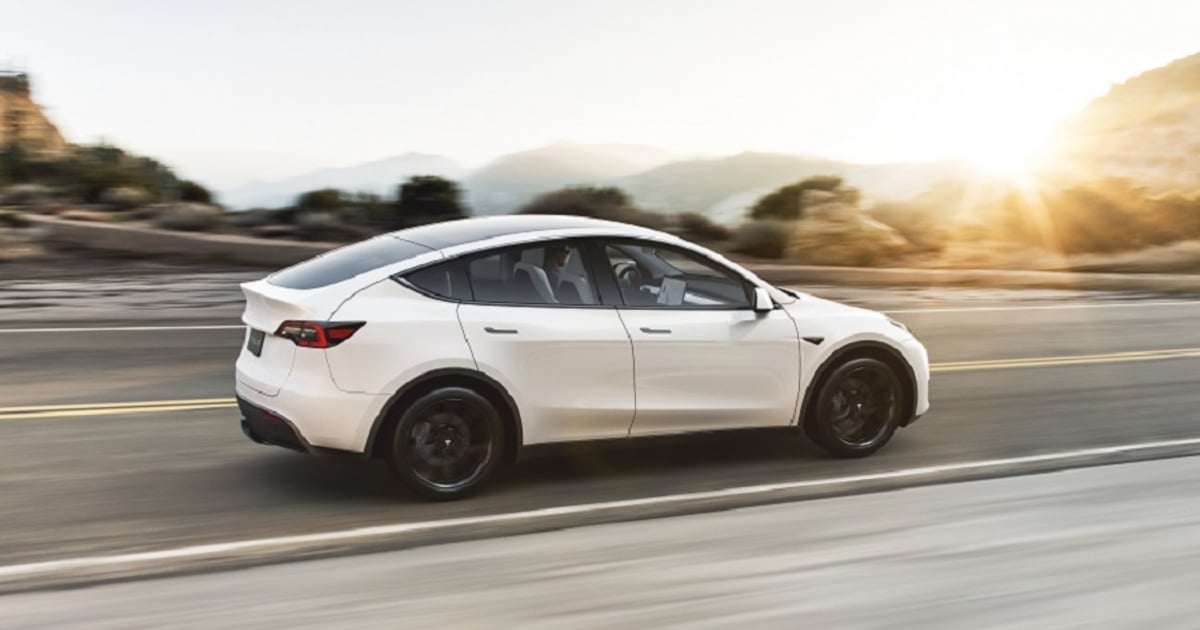
Tesla Inc. slashed prices across its four-vehicle lineup late Thursday after missing its delivery forecast for last year.
On its website, Tesla listed its top-selling Model Y Long Range with all-wheel-drive — its entry version in the U.S. market — at $52,990 before shipping.
That’s a reduction of $13,000, or 20 percent, over the crossover’s previous price.
The price reduction put the Model Y under the $55,000 price cap for tax incentives under a rule change that took effect Jan. 1. Previously, the crossover started at $65,990. Tesla charges $1,390 for shipping and an order fee of $250.
Tesla also reduced prices significantly for the Model 3 compact sedan, Model S midsize sedan and Model X midsize crossover after coming up short of its own expectations for global 2022 deliveries.
Tesla delivered more than 1.31 million cars for the year, falling short of its 50 percent growth forecast. Vehicle deliveries rose 40 percent last year while production grew 47 percent to 1.37 million, Tesla said earlier this month. CEO Elon Musk had predicted 50 percent growth for 2022.
Reuters reported Friday that Tesla had also cut Model 3 and Model Y prices Germany by 1 percent to 17 percent depending on the configuration.
Musk had warned last month that higher U.S. interest rates and a slowing economy could push the automaker to reduce prices to maintain its growth momentum. Musk also said lower prices would also reduce profit.
More competitive
The price cut to the base Model Y, Tesla’s No. 1 seller in the U.S., makes it more competitive vs. rivals that have been chipping away at its EV market share.
In recent guidance from the IRS, the two-row Model Y was given a price cap of $55,000 to qualify for the new EV incentive of up to $7,500 under last year’s Inflation Reduction Act. Under the previous version of the incentive, Tesla had lost of eligibility after hitting its quota of 200,000 vehicles in 2020.
With the automaker’s new pricing and assuming the full $7,500 tax incentive for a qualifying customer, the Model Y’s effective starting price would fall to $45,490.
Since the Treasury Department is still finalizing the incentives, it’s possible the Model Y may only qualify for a $3,750 incentive. It’s also possible the Model Y’s price cap could increase to $80,000 after revisions if its considered an SUV rather than a car, which comes with the $55,000 cap. The IRS considers the three-row version of the Model Y an SUV.
On Twitter, Musk had complained that the lower price limit for the two-row Model Y was unfair and encouraged brand loyalists to write the IRS as part of the agency’s request for public comments.
Tesla’s price cuts suggest the automaker may have a significant demand problems amid reports that inventory has been piling up in global markets.
The base Model 3’s price was cut $3,000 to $43,990. The starting price for the midsize Model S was reduced by $10,000 to $94,990 and the midsize Model X saw an $11,000 drop to $109,990.
“This is what we call using the demand levers,” said Loren McDonald, CEO of analysis and consulting firm EVAdoption.
McDonald said potential buyers may have put their Model Y orders on hold waiting for a firm set of rules from the Treasury Department regarding the tax incentives. The price cuts offer a strong stimulus to buy now since the $55,000 cap is no longer an issue.
Tesla offered temporary $7,500 price cuts in December in the U.S., but only for inventory models. The new price reductions also apply to new orders.
Over the past two years, Tesla had steadily increased prices for its lineup due to strong demand for EVs and limited supply by competitors struggling with supply-chain shortages. Wait times for the base Model Y stretched to six months or more even with the hefty increases. But times have changed.
Global price cuts
Earlier this month, Tesla cut prices in China by 6 percent to 13.5 percent. After the reductions, there were signs of increasing demand as wait times for new Teslas increased by a few weeks.
Tesla has also reduced prices in other markets. Reuters reported that the EV maker has cut prices in South Korea, Japan, Australia and Singapore. Tesla also cut prices in the UK, France, Italy, Austria, and Switzerland.
Tesla said on Friday that was able to provide its cars at a more accessible price in Germany because cost inflation was normalizing.
“At the end of a turbulent year with interruptions to the supply chain, we have achieved a partial normalization of cost inflation, which gives us the confidence to pass this relief onto our customers,” a spokesperson for Tesla Germany said in a statement.
Last year, the U.S. and China combined had accounted for about 75 percent of Tesla sales, although the automaker has been growing sales in Europe, where its factory near Berlin has been ramping up production.
In China, where Tesla cut prices last week by 6 percent to nearly 14 percent, owners protested at delivery centers across the country, pressing Tesla for compensation.
Analysts had said the China price cuts would boost demand and deepen the pressure for its rivals there, including BYD, to follow suit in what could become a price war in the largest single market for EVs. That pressure could be building in Europe as well.
Tesla missed Wall Street estimates for fourth-quarter deliveries.
Last month, Musk said “radical interest rate changes” had changed the industry-wide outlook and that Tesla could lower pricing to sustain volume growth, which would result in lower profit.
Reuters and Automotive News Europe contributed to this report